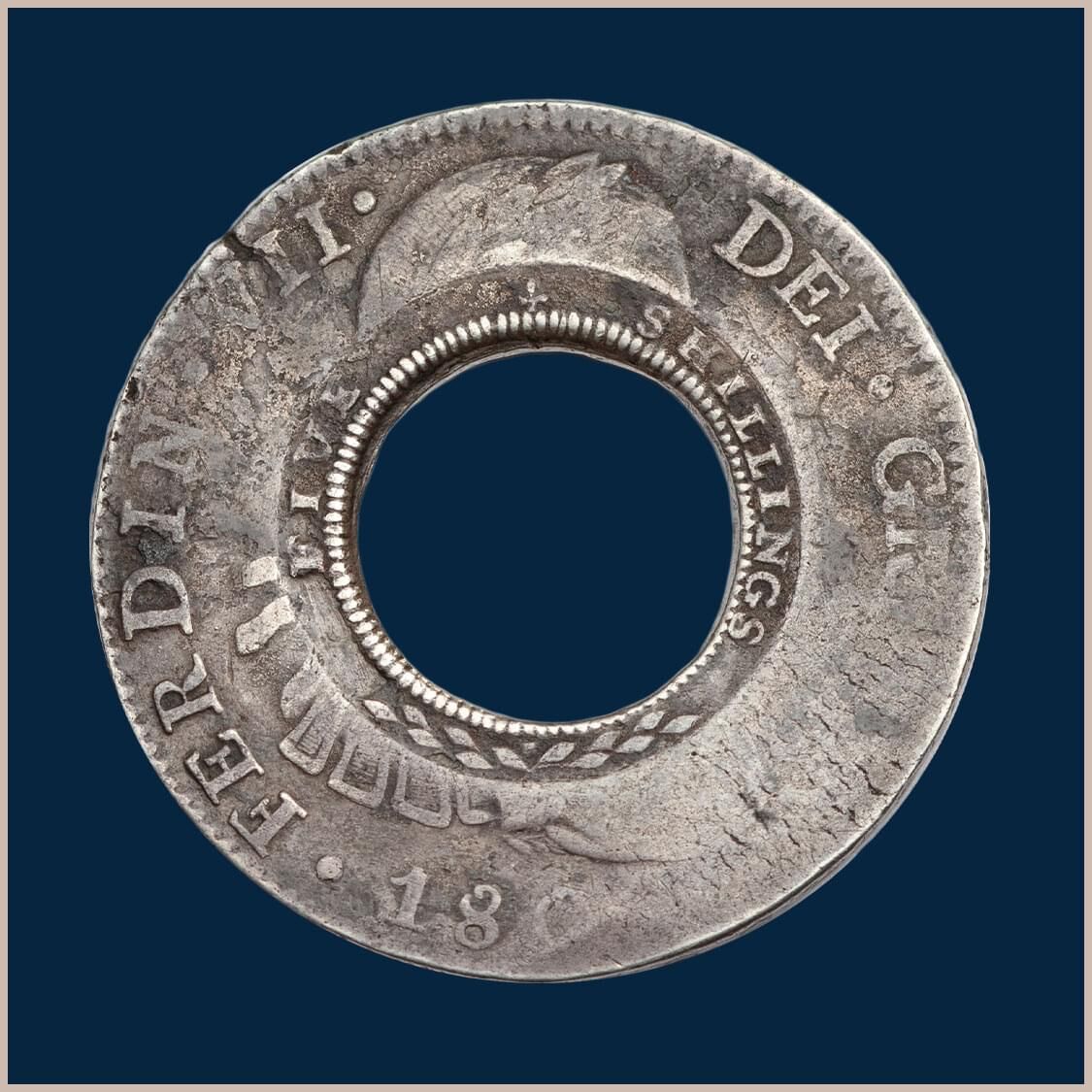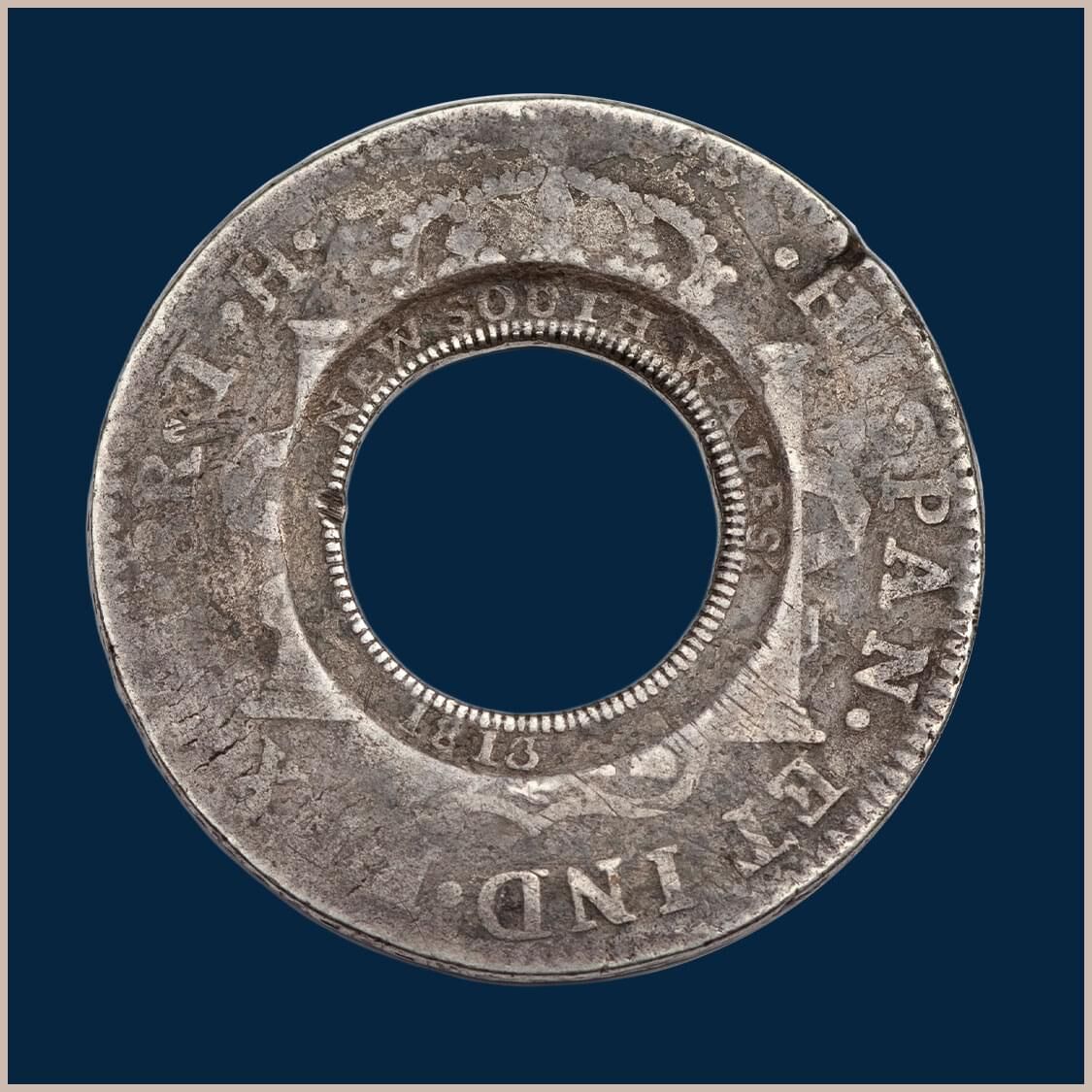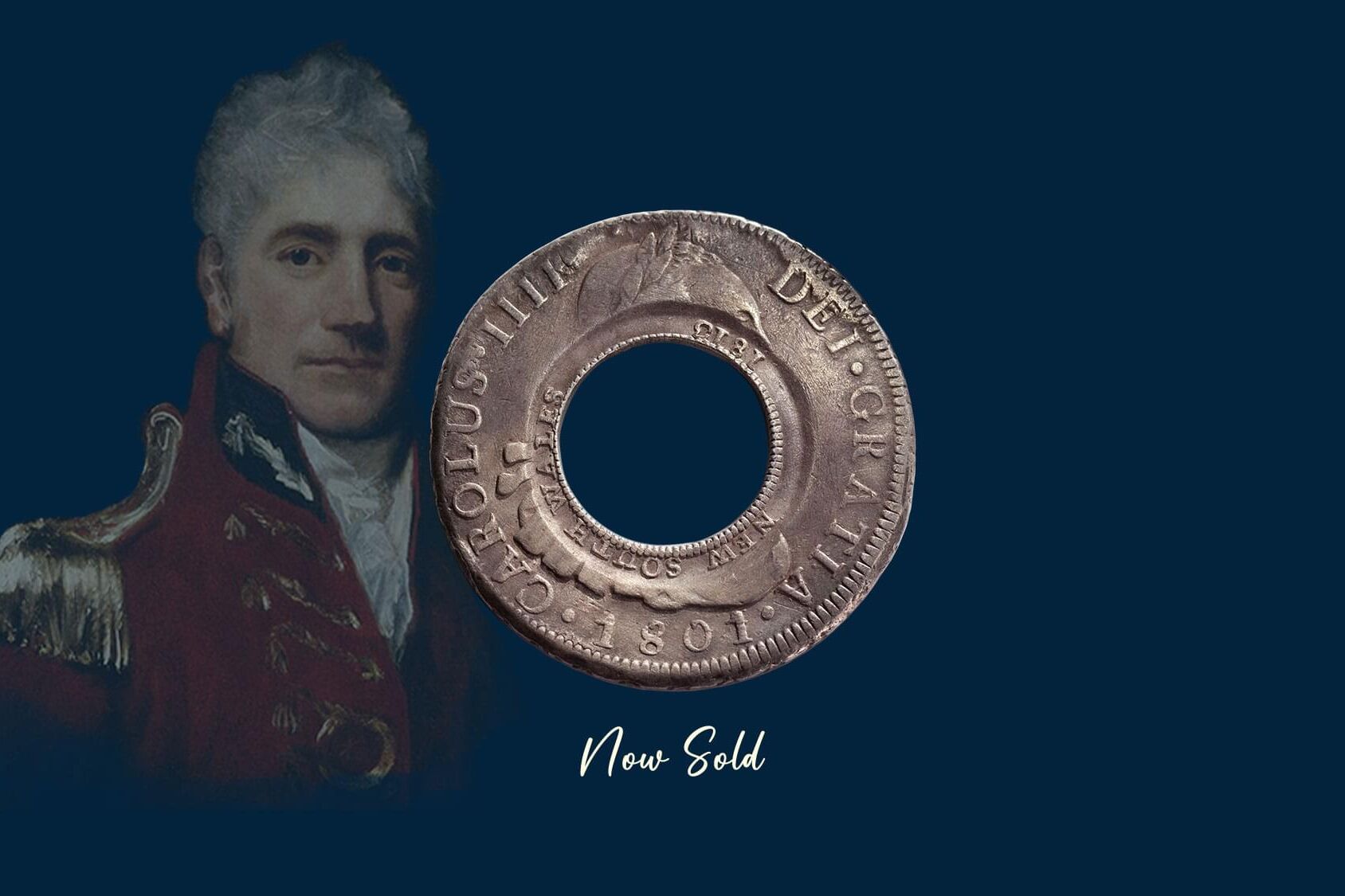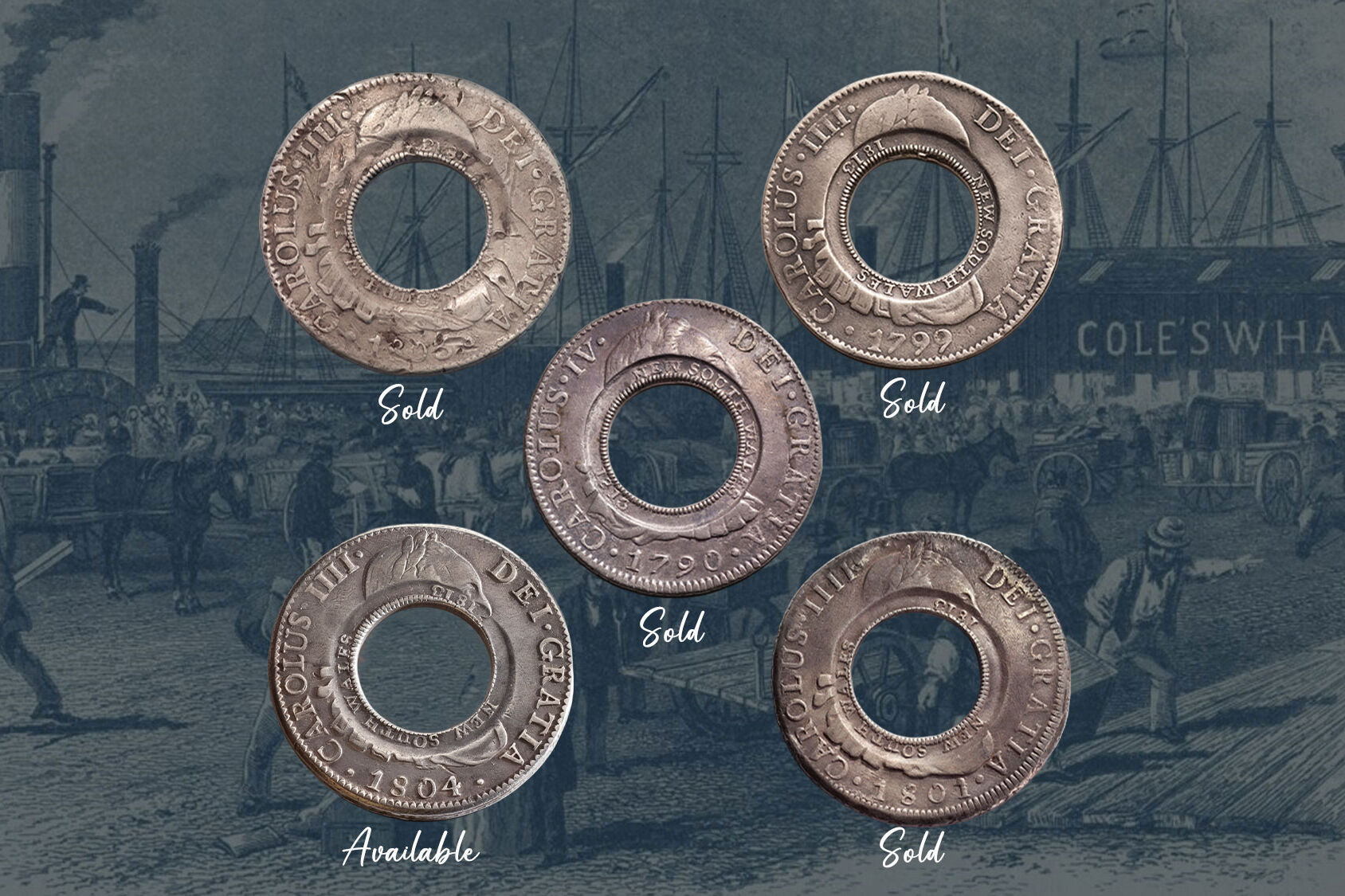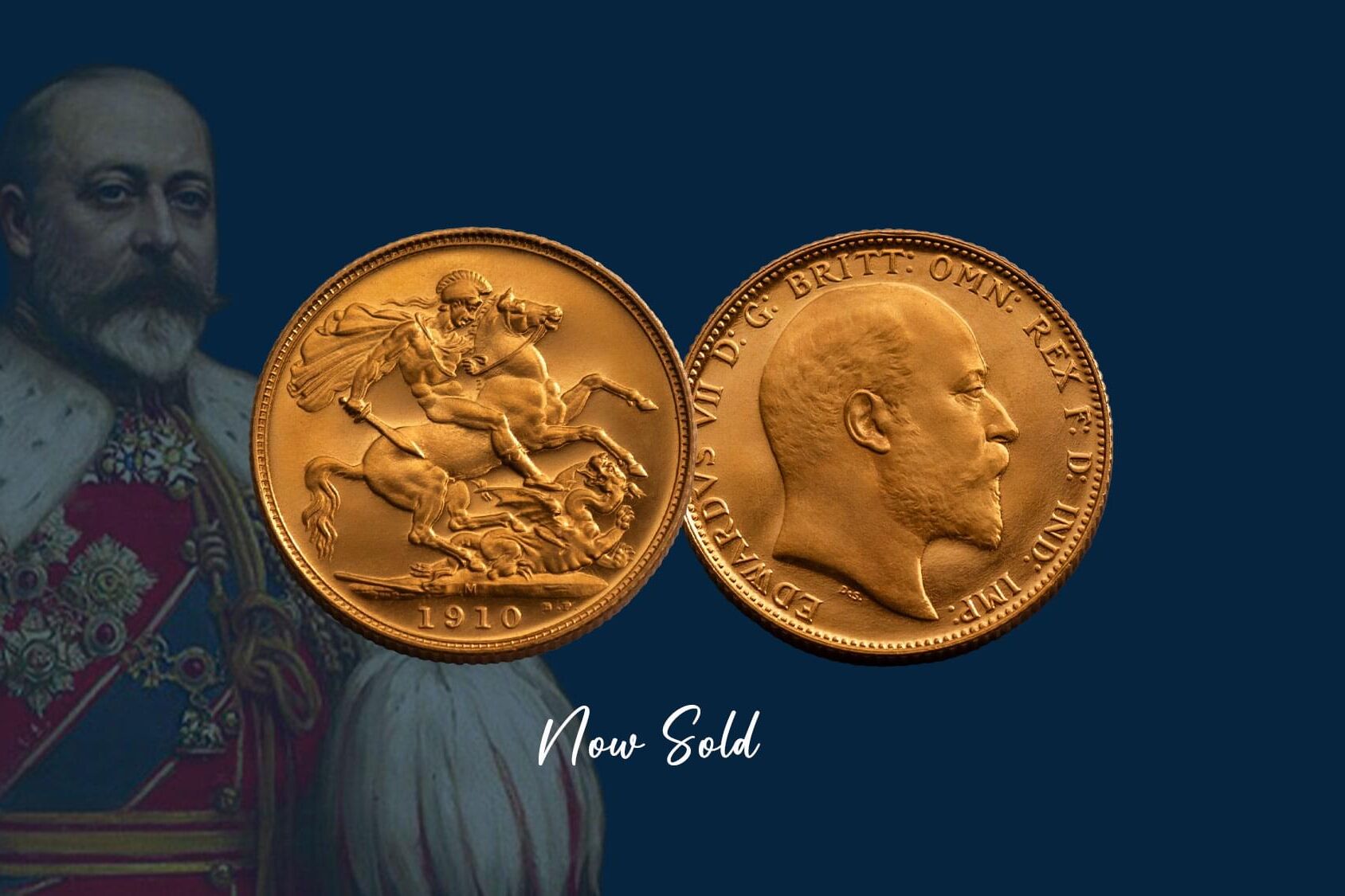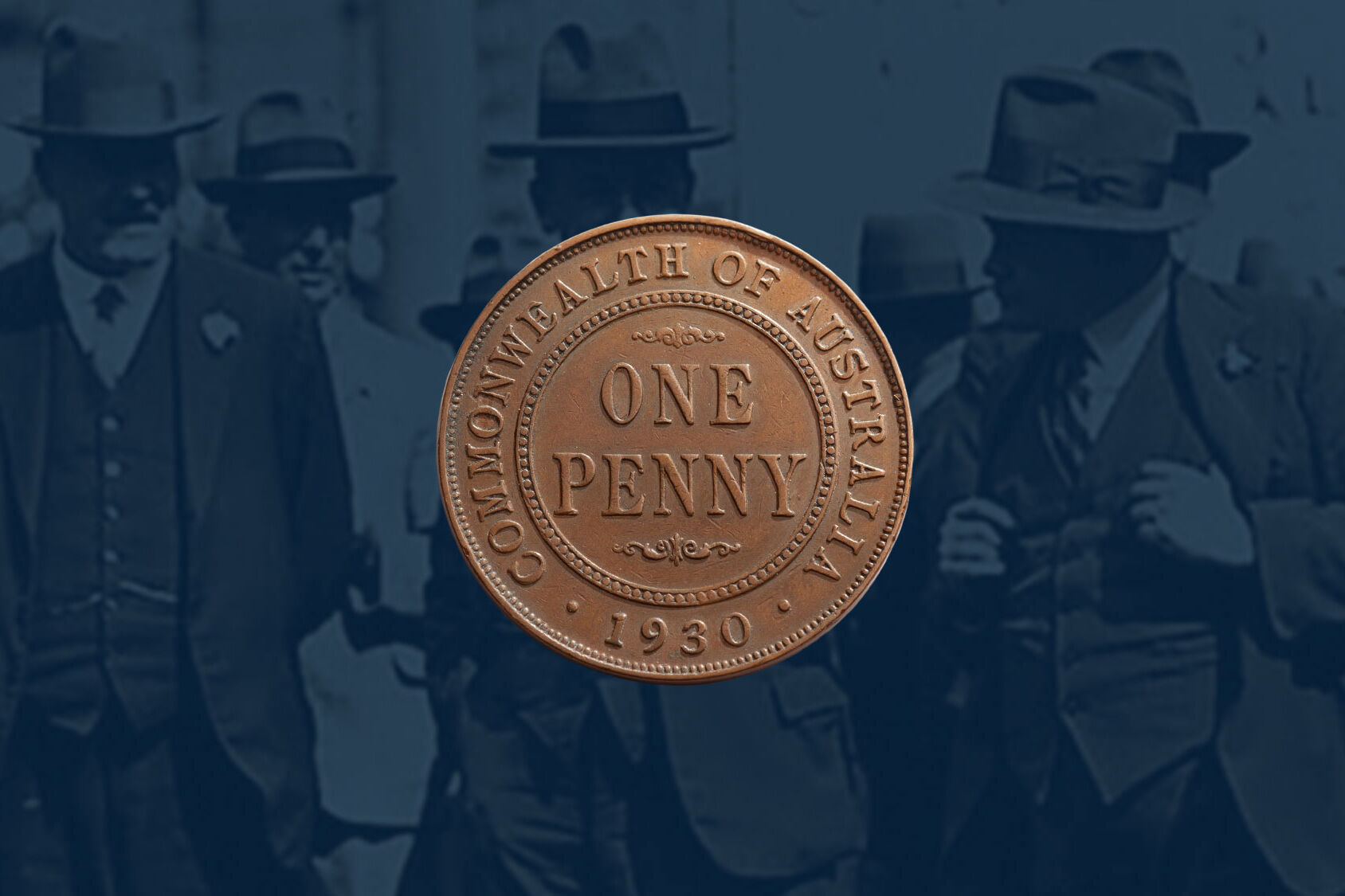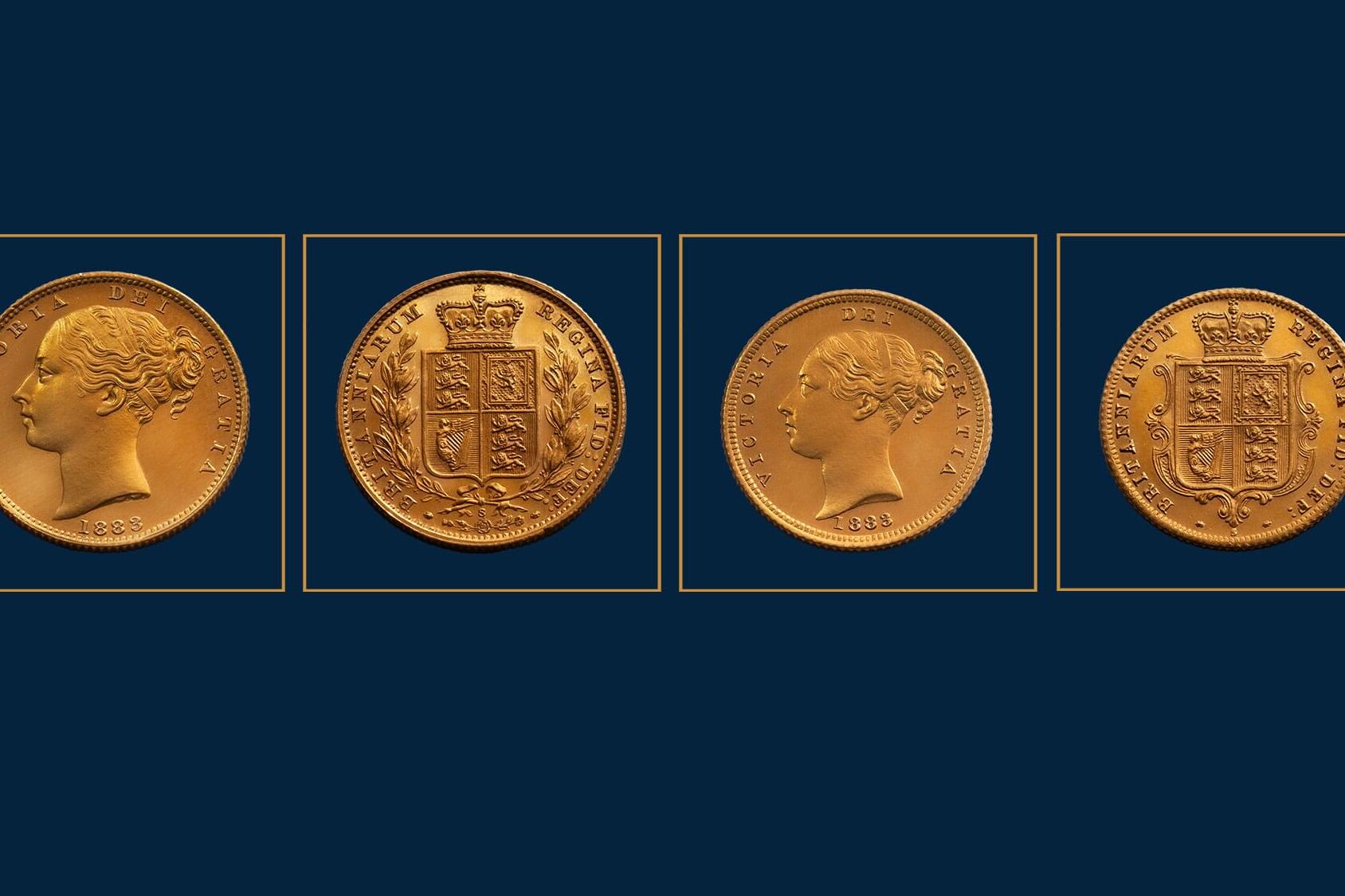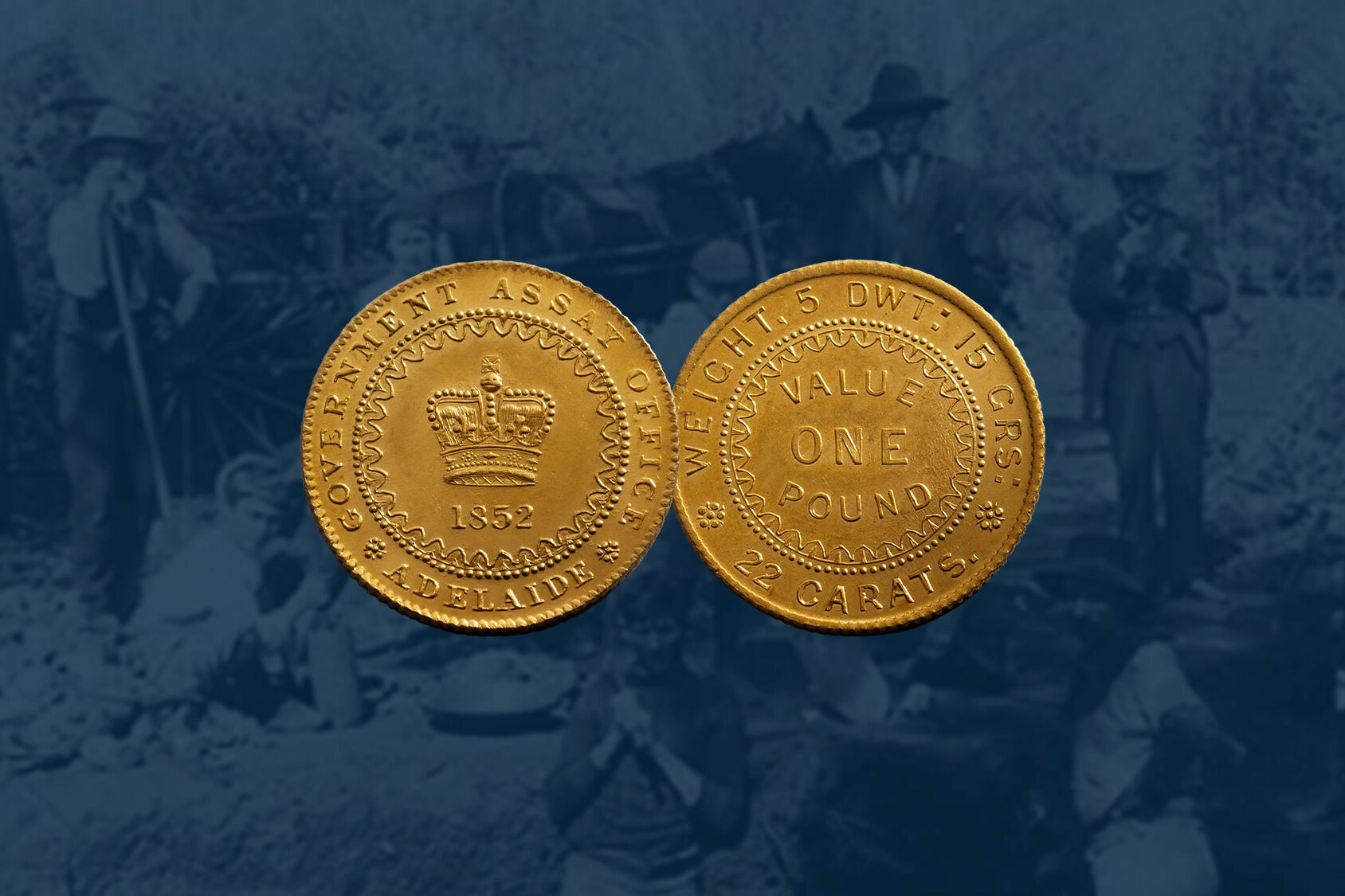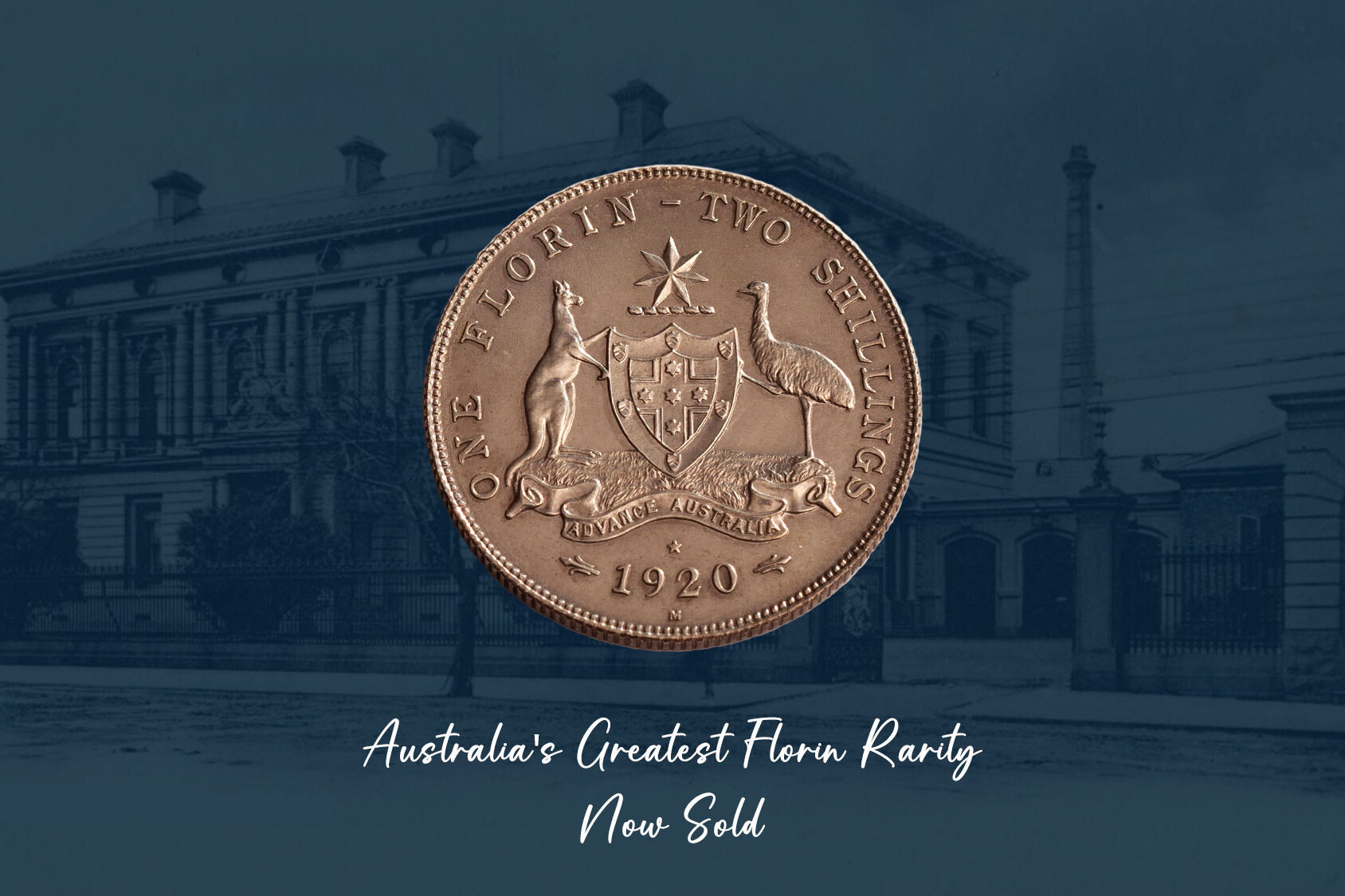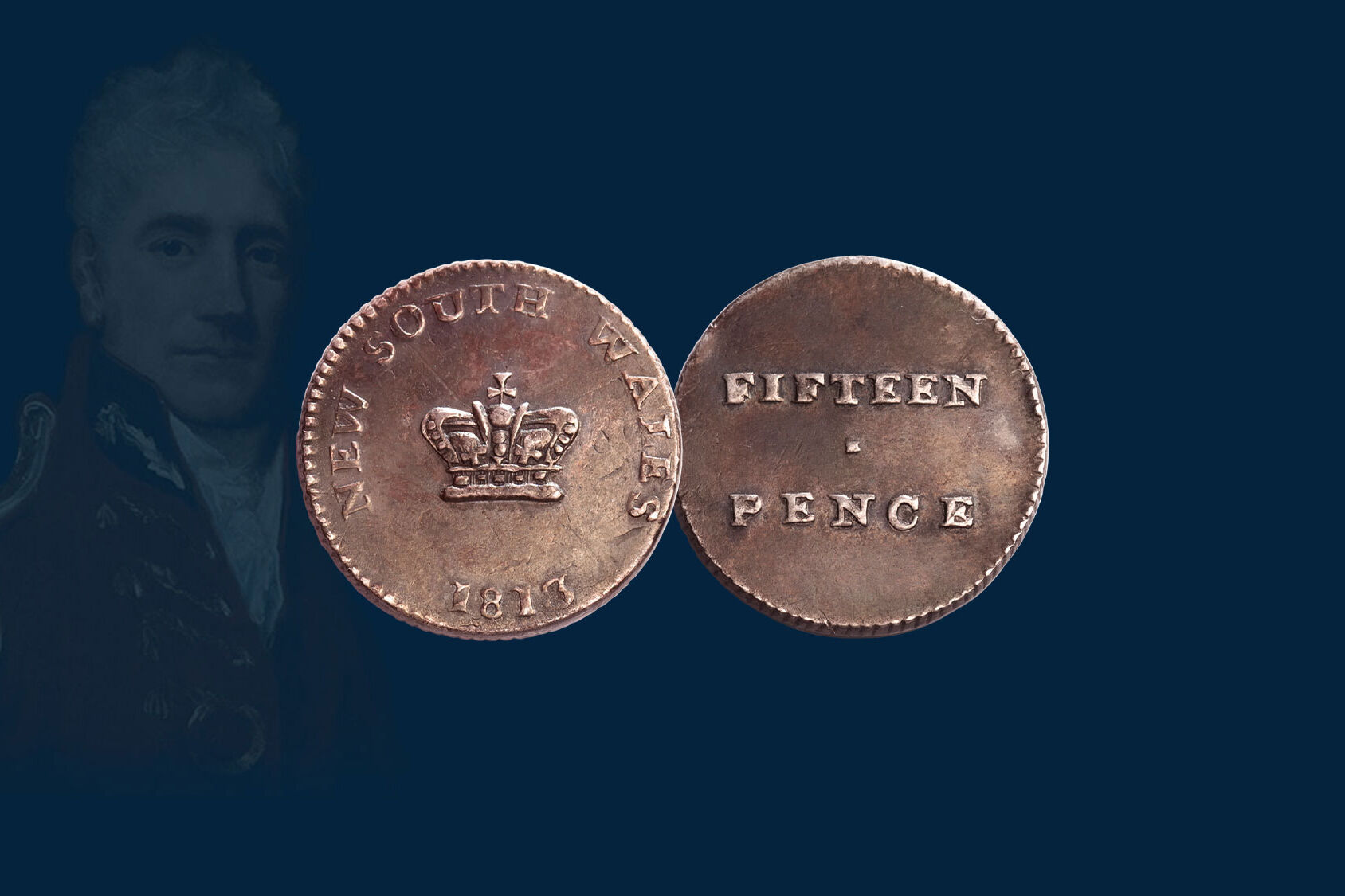We admit it. We just love 'Ferdinand VII' Holey Dollars. They are as rare as they are intriguing.
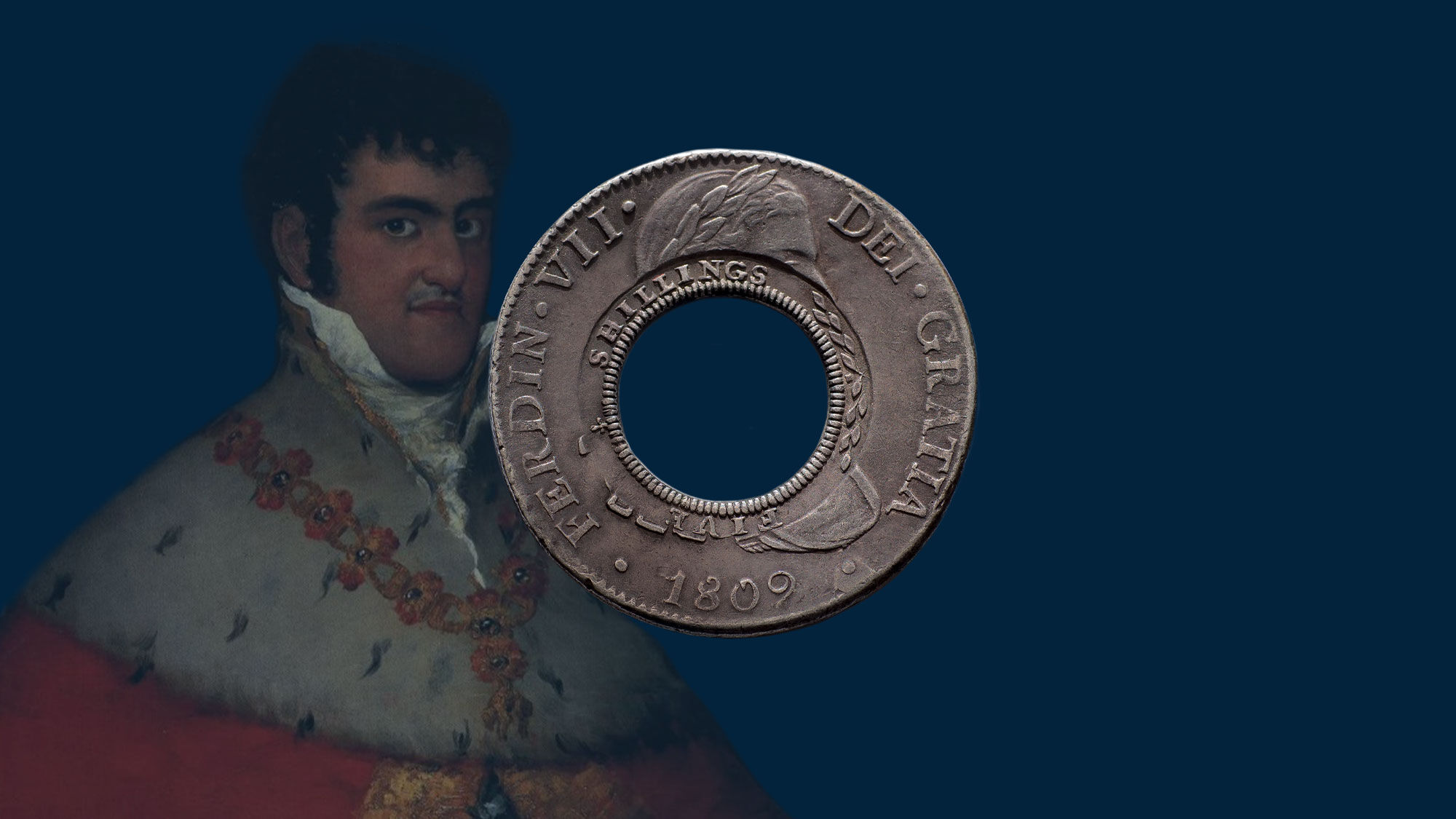
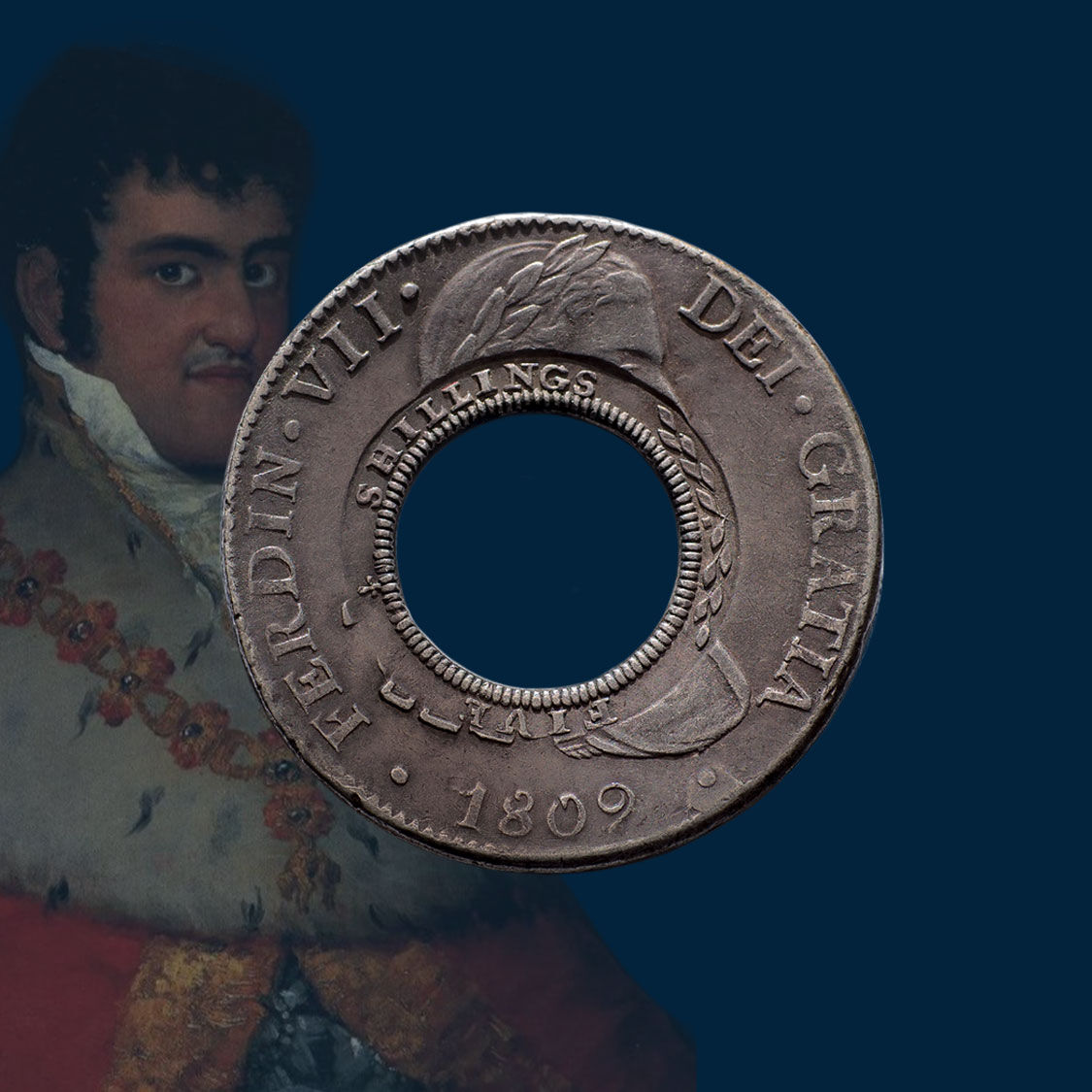
We admit it. We just love 'Ferdinand VII' Holey Dollars.
Not only are they inordinately rare, the intrigue and controversy associated with them makes for fabulous reading. It’s politics 101. Played out in the nineteenth century.
First up lets define the term 'Ferdinand VII' Holey Dollar.
It is a Holey Dollar that was created in 1813 from a Spanish Silver Dollar that bore the portrait of King Ferdinand VII of Spain.
Exceedingly rare, only thirteen privately held Holey Dollars depict the portrait of Ferdinand VII.
Today, in 2023, there are approximately one hundred and ninety three Holey Dollars held by private collectors. If we take out the thirteen that depict Ferdinand VII, the remaining Holey Dollars depict the portrait of Ferdinand VI (of which only one is available), Charles III (approximately 34 available) and Charles IV (the most readily available with approximately 144 known.)
To understand why there are variations in the monarch it has to be remembered that the Holey Dollar was not created from a silver blank. It was created from another coin, the coin being a Spanish Silver Dollar that quite obviously had its own date and monarch depicted on it.
Governor Lachlan Macquarie imported 40,000 Spanish Silver Dollars to convert into Holey Dollars and Dumps. Macquarie's order was not date specific. Any date would do. And any monarch would suffice. Nor did he care where the dollars were minted and he certainly placed no controls on quality. And it is the combination of the date, monarch and mint that defines the rarity of a Holey Dollar and that leads us to say that while all Holey Dollars are rare, some are indeed rarer than others.


Confirmed in 1988 and again in 2023, Ferdinand VII Holey Dollars are the rarest of the rare.
A major study completed in 1988 by Messrs. Mira and Noble identified a total of 177 privately owned Holey Dollars. And confirmed the relative frequency of the four monarchs within that total. Their results are summarised below.
Ferdinand VI Holey Dollar
Ferdinand VI reigned from 1746 to 1759 and in the Mira Noble study conducted in 1788 only one Holey Dollar was recorded as depicting his portrait. Struck in 1757, fifty six years before Henshall got his hands on it, there are no other known Ferdinand VI Holey Dollars in museums or privately owned worldwide.
Charles III Holey Dollar
Charles III reigned from 1759 to 1788 and the study identified that his portrait appeared on thirty two Holey Dollars.
Charles IV Holey Dollar
Charles IV reigned from 1788 to 1808. The study concluded that his portrait appeared on one hundred and thirty Holey Dollars. The Spanish Empire was at its zenith during the reign of Charles IV; the silver rich continent of South America bankrolling Spain's ascendancy as a world power by way of massive silver coin production.
Ferdinand VII Holey Dollar
Ferdinand VII reigned in 1808 for less than two months. And again in 1814. The study completed in 1988 identified that his portrait appeared on only thirteen Holey Dollars.
Imaginary Portrait Holey Dollar
And if you are doing the math on the numbers quoted above, yes it does total 176. And the missing coin? The Hannibal Head Holey Dollar featuring the imaginary portrait of the Spanish monarch, sold by Coinworks in August 2018 for $500,000.
Given that the above data was compiled in 1988, it stands to reason that several examples must have been discovered over the last thirty five years. And that is indeed the case. According to our research, the list of 177 privately owned Holey Dollars can now be updated to 194, with the addition of seventeen recently discovered examples. The monarch's portrait, legend and date depicted on the newly discovered Holey dollars are summarised below.
Charles III
Two Holey Dollars have emerged with the portrait of Charles III, one dated 1789 and struck at the Lima Mint. And the second dated 1790 and struck at the Mexico Mint. Given that Charles III died in 1788, these two Holey Dollars have a serious importance.
Charles IV
Fourteen Holey Dollars have emerged dated 1791, 1792, 1793, 1794 (2), 1798 (2), 1799, 1800, 1805 (2), 1806 (2) and 1808. Of those only one relates to the Potosi Mint, four to Lima and the balance were produced at the the Mexico Mint.
Ferdinand VII
There have been no new Ferdinand Holey Dollars on the market since the study was completed in 1988. Re-affirming their inordinate rarity.
Imaginary portrait (see history section below for explanation)
One Holey Dollar emerged in 2020 featuring the legend of Ferdinand VII and the imaginary portrait of the Spanish monarch. The coin was sold in March 2020 by Coinworks for $95,000.
1813 Holey Dollar struck on a Ferdinand VII Spanish Silver Dollar that was minted at the Mexico Mint in 1810. The former property of Philip Spalding and now held with a Melbourne Coinworks client, we rate it as number three in the pecking order of Ferdinand VII Holey Dollars.
1813 Holey Dollar struck on a Ferdinand VII Spanish Silver Dollar that was minted at the Mexico Mint in 1809. Sold in September 2022 for $88,000.
Ferdinand Holey Dollars have a wonderful story to tell.
Napoleon Bonaparte emerged as the strongman of Europe in 1799 leading his armies across Europe deposing monarchs and dominating the entire continent. At the time Spain was ruled by King Charles IV and Spain was an ally of France.
In 1807, Bonaparte’s armies marched through Spain and invaded Portugal. The alliance between France under Bonaparte and Spain under Charles IV disintegrated the following year when on February 16, 1808, under the pretext of sending reinforcements to the French army occupying Portugal, the French invaded northern Spain.
King Charles IV was pressured into abdicating the Spanish throne in March 1808 to his son Ferdinand VII. The latter reigned for less than two months. Both Charles IV and Ferdinand VII were duped by Napoleon Bonaparte into ceding the Spanish throne to Bonaparte’s older brother Joseph who assumed rule of the Spanish kingdom on 6 June 1808.
And while the upper echelons of the Spanish Government accepted Ferdinand's abdication and Napoleon's choice of Joseph as King of Spain, the Spanish people did not. Uprisings broke out throughout the country.
The Mexico Mint refused to acknowledge Bonaparte as the Spanish King and protested by continuing to strike their silver dollars with the legend and portrait of the exiled Ferdinand VII.
The Lima Mint in Peru took their protest one step further. They created an imaginary portrait of the Spanish monarch (said to be quite ugly) and maintained the legend of Ferdinand VII. It’s politics 101. Played out in the nineteenth century.
By 1813 the French position in Spain became untenable and Napoleon withdrew his troops and released Ferdinand VII from Valencay, France, where he had been imprisoned. Ferdinand VII returned triumphantly to Madrid and re-claimed the Spanish crown early in 1814.
Shop Coinworks
© Copyright: Coinworks
